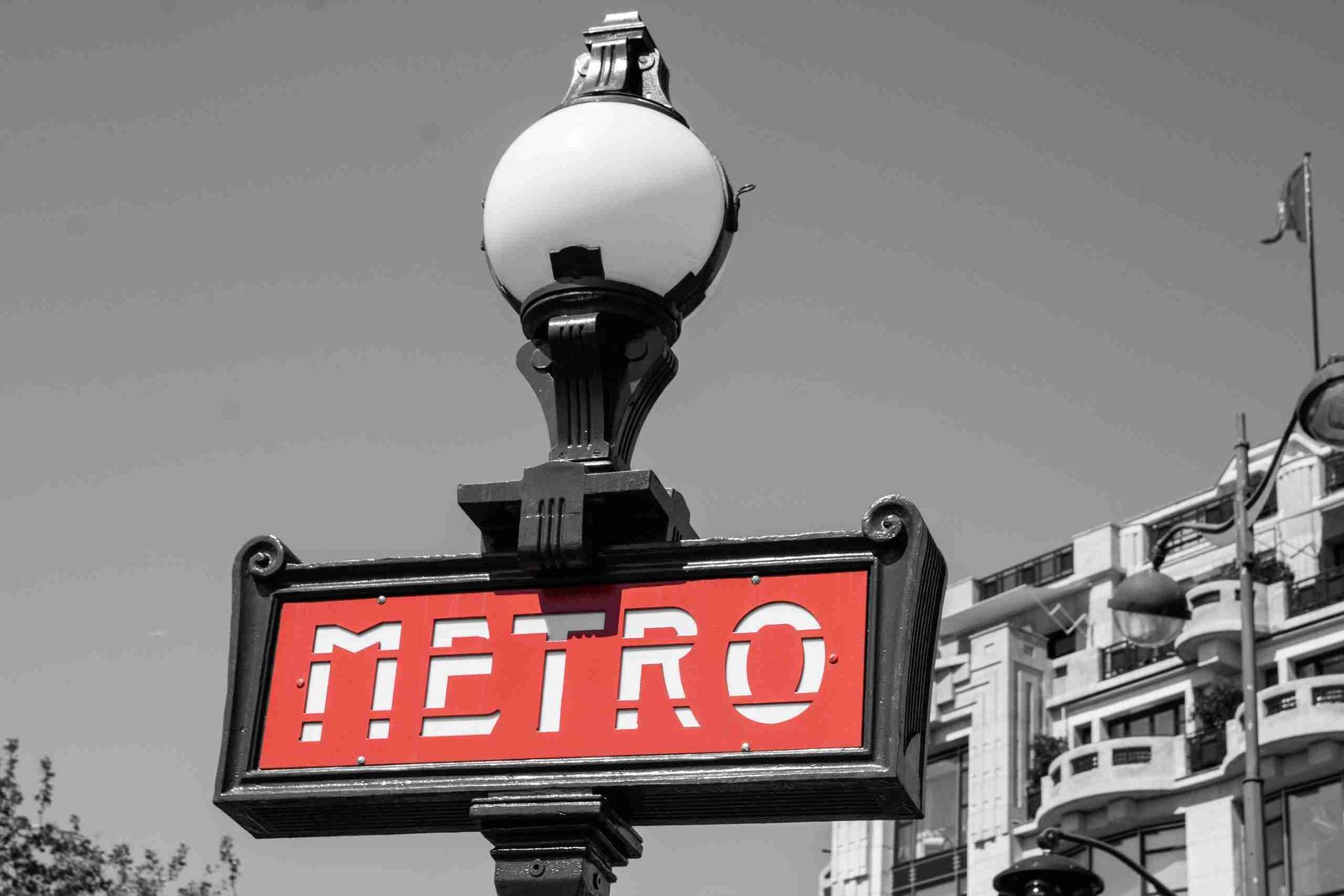
Overview of Paris Transportation Options
Metro Benefits
The Paris Metro, with its train stations and bus stops, is the heart of the city’s public transportation rail network system. It reaches almost every corner of the city. The metro makes getting around Paris fast and easy.
The RER trains in the public transportation rail network run frequently, so you won’t wait long at bus stops for a train. Tickets for travel on public transport, especially if you buy day passes in bulk or use a tourist pass at train stations, are affordable.
Bus Accessibility
Buses in Paris offer views you can’t get underground. They are great for seeing the city’s beauty. Routes cover all major attractions and neighborhoods.
However, traffic can slow them down during busy times. Yet, trains remain a reliable transport option for those preferring to stay above ground and on their way via rail.
Taxi Convenience
Taxis provide door-to-door service at any hour. They’re perfect when carrying luggage or traveling late at night on public transport, especially on bike-friendly train lines and stations.
This convenience comes at a higher cost compared to public transport options like bike stations and train tickets. But splitting fares for tickets with friends can make travel on public transport options more affordable.
Biking and Walking
For short distances, nothing beats walking or biking through Paris streets, near public transport stations in the city centre.
- Walking is free and allows for spontaneous exploration.
- Bikes, as a public transport option, can be hired from numerous stations across the city.
Both give unique perspectives on Parisian city life not seen from inside a vehicle or train car in public transport zones or stations.
Understanding Paris Metro System
Metro Coverage
The Paris Metro system is vast. It has 16 transport lines with stations that weave through the city like veins, accessible with tickets or a card. This network connects various neighborhoods, landmarks, and suburbs.
Navigating this system might seem daunting at first. But the service, designed for easy use with card options at stations, becomes intuitive once you get the hang of it. Each line has a different color on maps, making them simple to identify stations.
Ticket Options
Buying tickets for the metro is straightforward. You can purchase transport tickets at any station or via smartphone apps, with multiple options available.
There are several ticket types available:
- Single ride tickets.
- Day passes for unlimited travel.
- Week-long passes, ideal for longer stays.
Choosing the right transport ticket depends on your travel needs in the city of Paris.
Operating Hours
Metro services in the city start early in the morning and run until past midnight, offering transport on various lines with tickets available. This ensures that residents and visitors alike can move around the city almost anytime they need to with their transport card or tickets.
First trains depart around 5:30 AM on most lines. The last city line tickets leave just after midnight during weekdays and a bit later on weekends, offering various options.
Navigating the City with Buses and Trams
Bus Routes
Paris’s public transportation network is extensive. It doesn’t just stop at the metro. The city’s bus system, with its various line options and tickets or card system, fills in all the gaps, making every corner of Paris accessible.
Over 60 bus routes weave through Paris. They reach areas far beyond what the metro touches. This makes city buses a great choice if you’re looking to explore more local neighborhoods or places not directly served by train lines, using tickets or a card. Each city bus stop provides clear maps, schedules, and ticket/card purchasing options for each line, ensuring you can easily find your way.
Tram System
Trams add another layer to getting around the city of Paris efficiently, especially on the outskirts, with tickets available for each line. Unlike buses and metros that focus on the city center, tram lines extend into quieter suburbs offering a scenic view along their routes, with tickets available for these journeys.
The tram system operates smoothly alongside other forms of public transport like buses and trains in the city, using tickets. It connects several key metro stations with outer regions. This integration ensures travelers can move seamlessly from one mode of transport to another without hassle, managing their tickets throughout the journey.
Night Service
Don’t worry if your exploration extends into late hours; Paris has got you covered with its Noctilien service and tickets.
Night buses operate after regular public transport services have ended for the day, requiring tickets. They ensure that even in the wee hours, residents and tourists alike can travel safely across different parts of the city without being stranded or worrying about tickets.
The Convenience of Parisian Taxis and Ride-Shares
Taxi Service
Taxis in Paris offer door-to-door service. This is perfect for those who prefer not to navigate the public transport system, deal with tickets, or are traveling with luggage. However, taxis can be pricier than buses or trams. They charge for tickets based on distance and time, especially during rush hour.
Taxi stands are easy to find across all arrondissements. You might catch a taxi within minutes at these stands. Yet, during peak times, you may face longer wait times.
Ride-Share Options
Ride-sharing apps present an alternative with flexible pricing. Unlike fixed taxi fares, ride-share prices vary depending on demand and time of day. This can sometimes offer cheaper rides outside rush hours.
However, finding a ride-share car may require some waiting, unlike taxis that you can hail from designated stands. Pickup locations for ride-shares aren’t as widespread as taxi stands but are usually located near popular spots or RER stations.
Both taxis and ride-shares make getting around Paris easier compared to public transport options like buses and trams discussed earlier:
- Taxis provide convenience without the need for maps.
- Ride-shares often cost less than taxis but require a bit of patience for pickup.
Exploring Paris by Bike and Scooter Rentals
Flexible Options
Paris offers numerous bike and scooter sharing programs. These allow for quick, short trips around the city. Unlike taxis or ride-shares, you can pick up a bike or scooter almost anywhere.
You find these rentals through apps. They charge either per minute or offer subscription fees. This makes it easy to choose what fits your budget best.
Safe Lanes
Dedicated lanes make cycling in Paris not just safer but also faster than driving at times. You don’t have to worry about getting stuck in traffic.
These lanes cover much of the city, making it possible to explore far and wide on two wheels.
Walking – A Pleasant Way to Discover Paris
Iconic Sights
Walking is a great way to visit Paris. Many famous sights are close to each other. You can easily walk from the Louvre to Notre-Dame in minutes. This makes exploring simple and enjoyable.
By walking, you see more details of the city. Each street has its own story. You’ll find hidden gems not listed in guidebooks.
Pedestrian Zones
Paris boasts many pedestrian-friendly areas. The Seine riverbanks are perfect for strolls. These zones make walks safe and peaceful.
There are also parks and squares where cars don’t go. Here, you can relax away from traffic noise.
Health Benefits
Walking is free and healthy. It’s good for your heart and mind. You also get a closer look at Parisian life in different neighborhoods. This intimate exploration lets you feel part of the city, even if just for a day.
Compared to biking or scooters, walking has no cost or learning curve. It’s accessible to everyone at any time.
Tips for Efficient Travel in Paris
Combine Transport
Mixing different types of transport can make your trip smoother. Paris has buses, metros, and bikes available. Combining them wisely saves both time and money.
For example, taking the metro for longer distances then switching to a bike can be faster during rush hours. This method also lets you see more of the city’s beauty up close.
Off-Peak Travel
Traveling off-peak means fewer people and shorter waits. Morning rush hour is from 8 to 9 AM, while evening rush peaks between 6 and 7 PM. Avoid these times when possible.
Visiting attractions early in the morning or later in the afternoon also helps dodge crowds. You’ll enjoy a more relaxed experience without the hustle.
Multi-Use Tickets
Buying multi-use tickets or passes offers great benefits:
- Savings: They’re cheaper than single tickets.
- Convenience: No need to purchase a ticket each ride.
- Flexibility: Explore at your own pace with unlimited rides within validity periods.
The Navigo Pass is perfect for week-long stays, offering unlimited travel across various zones. For shorter visits, consider a book of ten single tickets or a day pass tailored to tourists’ needs.
Choosing the Best Travel Option Based on Your Needs
Distance and Cost
When planning your journey in Paris, it’s crucial to weigh the distance to your final destination against potential costs. Walking or biking can be ideal for shorter distances. These options are not only free but also allow you to soak in the city’s beauty at a leisurely pace.
For longer distances, public transport like buses and the metro offer cost-effective solutions. You can easily purchase tickets using a credit card at most stations. Remember, taxis or ride-sharing services might be quicker but will cost more.
Time and Comfort
If time is of the essence, opting for the metro or a taxi could save you precious minutes. The metro lines connect major parts of Paris efficiently, making it one of the top choices for quick travel.
However, when comfort is your priority—perhaps due to traveling with a group, carrying lots of luggage, or needing accessibility features—taxis become more appealing despite their higher price tag. They provide door-to-door service without the hassle of navigating crowded public transport.
Group Size and Accessibility
- For solo travelers or couples: Biking or walking could be enjoyable and practical.
- Groups: Consider rideshares or taxis for convenience.
- Travelers with special needs: Look into accessible taxi services ahead of time.
Always assess how each option aligns with your group’s size and any specific requirements you may have. Planning ahead ensures everyone enjoys their visit without unnecessary stress over getting around Paris.
Frequently Asked Questions
What are the main transportation options in Paris?
Paris offers a variety of transport options including the Metro, buses and trams, taxis and ride-shares, as well as bike and scooter rentals. You can also explore the city on foot to soak up its charm.
How does one navigate the Paris Metro system?
The Paris Metro is user-friendly with clear maps and signage. Purchase a ticket or a pass, check your route on the map, and follow signs to your platform. It’s like following breadcrumbs to your destination!
Are buses and trams in Paris easy to use for tourists?
Absolutely! Buses and trams have extensive networks across Paris. Grab a map or use an app to find routes. They’re great for sightseeing from above ground.
Can I easily find taxis or ride-shares in Paris?
Yes, spotting a taxi or booking a ride-share in Paris is straightforward. There are plenty of options available 24/7, making it convenient no matter where you are.
Is renting bikes or scooters advisable for getting around Paris?
Renting bikes or scooters can be fun for short distances. They offer flexibility and let you breeze through traffic while enjoying open-air views of the city.
What’s special about walking around Paris?
Walking lets you discover hidden gems at your own pace—think quaint cafes, stunning architecture, and serene parks tucked away from bustling streets.
How do I choose which travel option is best for me in Paris?
Consider factors like distance, convenience, cost, weather conditions (for biking/walking), peak traffic times (for metros/buses), plus what experiences you wish to gain – whether soaking up scenery leisurely on foot or zipping around efficiently by metro.



